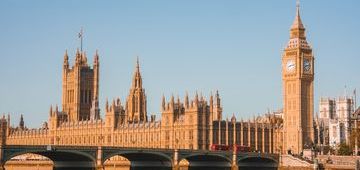
Jonny Pearson-Stuttard, RSPH Trustee and Public Health Doctor at Imperial College London, sets out what we know about the spread of the virus to date, and why the Government has taken the measures it has.
For further information or up to date guidance, please visit the Government website here or follow the links in the text.
Figures are correct as of 25.3.20
The first reports of Covid-19 emerged from Wuhan in China late in December 2019. Throughout January, the number of cases increased sharply in Wuhan and surrounding areas to around 80,000 recorded cases. At that stage, it was uncertain whether the Covid-19 outbreak would be largely confined to China, or whether this would become a global pandemic. Nearly two months later, however, there are (at the time of writing) more than 400,000 recorded cases, nearly 20,000 deaths across more than 190 countries as the pandemic gathers pace; it took 67 days for the first 100,000 cases, 11 days for the second and just four days for the third 100,000 cases.
UK outbreak
The incubation period for Covid-19 ranges from two to 14 days, with the most common around five days. The reproductive rate (R0), the expected number of cases generated by one infected individual, is estimated to be around 2.5. This means there is a time lag between increasing infection circulating in the community, through to the number of reported cases, those requiring hospital care and ultimately deaths.
The first confirmed case in the UK was at the end of January, with the first death from Covid-19 early March. The outbreak has accelerated over the past couple of weeks – from 45 cases per day on the 7 March to more than 1,000 two weeks later.
Emerging data helps us to understand more about the virus and our response
One of the many challenges facing governments, public health and healthcare services around the world is that Covid-19 is a new virus, so our understanding continues to evolve as the pandemic progresses. Data from Italy, the worst hit country in Europe so far with more than 60,000 registered cases and 6,000 deaths to date, has given insights into how different populations groups are affected differently by the virus. Estimates to date suggest that the risk of dying in those infected with Covid-19 is likely to be less than 1 in 100.
Risk of death, along with the symptoms experienced, can vary a lot. Many who contract covid-19 will have minor symptoms (some will be asymptomatic); however, the risk of experiencing more severe symptoms and requiring hospital care is higher in those with chronic conditions, risk factors such as smoking, and men compared to women. Age, too, is a strong predictor of more severe infection and poorer outcomes. For those with symptoms, for example, 1 in 20 under 50 years old is likely to require hospital care, but 1 in 3 of those over 80 will do so – and of those, around 70% are likely to require critical care (such as the use of ventilators). The differing risk of how the virus affects different population groups has important implications for tackling the outbreak.
UK response
The epidemiology suggests that without measures we might expect 50% of all cases to occur in an intense three-week period. This would overwhelm any healthcare system which would not be able to manage the sharp rise in demand for high-intensity care. This is why governments around the world have introduced measures aiming to ‘flattening the peak’ of the outbreak.
The UK approach appears to have three primary aims: i) to minimise the lives lost to Covid-19, ii) to protect those most vulnerable and at risk of poor outcomes from the infection, iii) manage the demand pressures on our NHS so that it can provide the best care needed to save lives.
The measures that have been introduced over past weeks aim to reduce community transmission and reduce the number of people at any one time needing urgent and critical care from our NHS to ensure they can be given the best care possible.
Case isolation
Those who have symptoms of Covid-19 were asked to stay at home and ‘self-isolate’ for seven days. This was then extended to a ‘household quarantine’ approach whereby if anyone in a household has Covid-19 symptoms, all other members of the household should isolate at home for 14 days, or 7 days after their own symptoms develop. Modelling that informed the Government’s approach suggests that case isolation and household quarantine will have the largest single effect in reducing transmission of all measures. A combination of measures is likely to be more effective still.
Social distancing
Without measures, one infected person could lead to more than 400 people being infected within a month. Reducing exposure by 50% would mean just 15 people infected, while 75% less exposure would mean just 2.5 people infected in a month.
As the outbreak has become widespread, transmission in the community, often unknowingly, has increased. To tackle this, ‘social distancing’ measures have been implemented over the past 10 days. If the public stick to the guidance, this can drastically reduce transmission.
Social distancing measures, however, have large impacts on daily lives and people’s livelihoods and will need to be sustained for some time. This is why the aim is to use them when they will have the biggest positive impact in preventing transmission.
These measures have included working from home where possible, schools and universities closing, and most recently closing all shops that do not provide essential goods (medicines, foods etc), individuals only leaving home for essentials and one exercise a day, and prohibition of meetings of more than two people in public.
Protecting the most vulnerable in society
Alongside these measures for the whole nation, more specific guidance for those most at risk of poor outcomes from Covid-19 infection have been made. These include ‘shielding and protecting’ extremely vulnerable people during this outbreak such as those with an organ transplant, specific cancers or immunosuppressed. These groups have been advised to stay at home at all times and avoid any face-to-face contact for at least the next 12 weeks.
We should expect to begin to see the effects of these measures on case numbers and hospitalisations in around 14 days’ time.
Covid-19 has already caused hundreds of deaths in the UK and many more lives are likely to be lost. It will have profound effects on all of our lives with serious implications for mental health and social isolation. As we enter the peak phase of the UK outbreak, we must all play our part at this time of national crisis.



